The Seattle Art Museum (SAM)
Introduction
Text-to-speech Audio
Images
The museum was established in 1933. Since 1991, SAM has been located in this beautiful modern building.
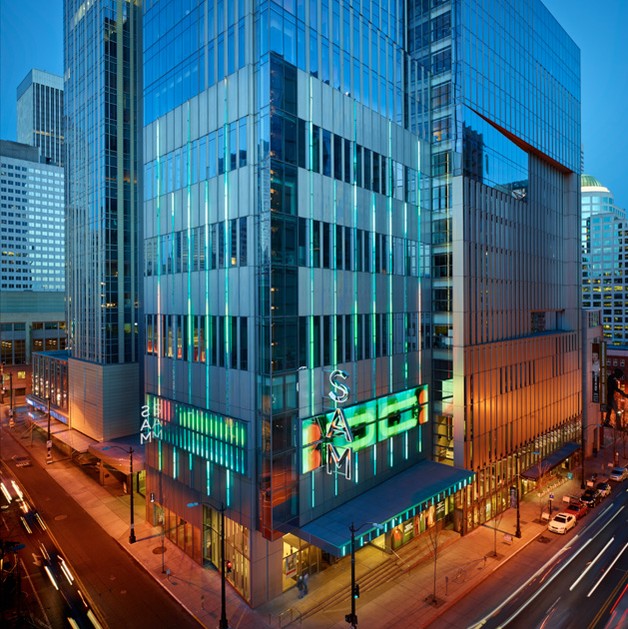
Dr. Richard E. Fuller and His Mother, Margaret
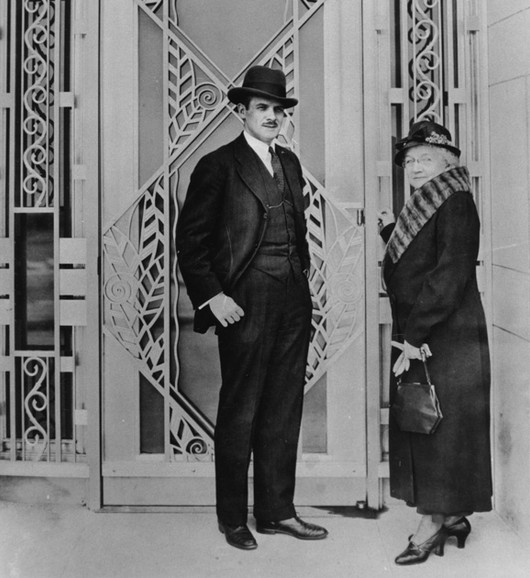
After the internment of Japanese Americans on the West Coast during World War II, this exhibition of Japanese Art in 1953 was intended to help heal relations between Americans as well as between the US and Japan.
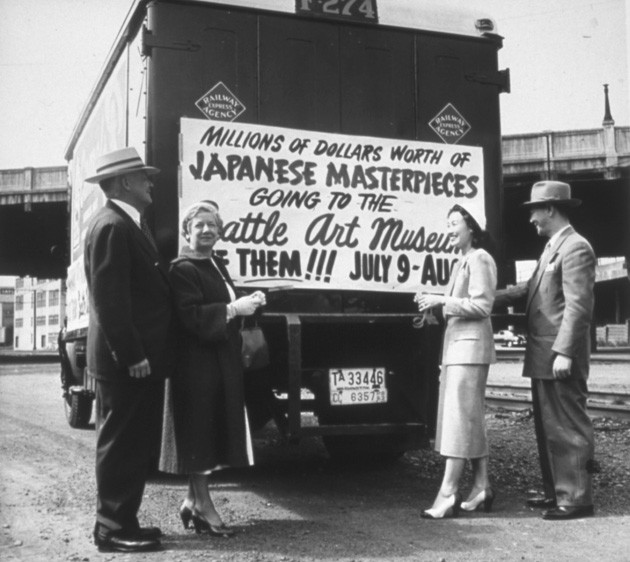
Andy Warhol Visiting a Special Warhol Exhibition, 1976
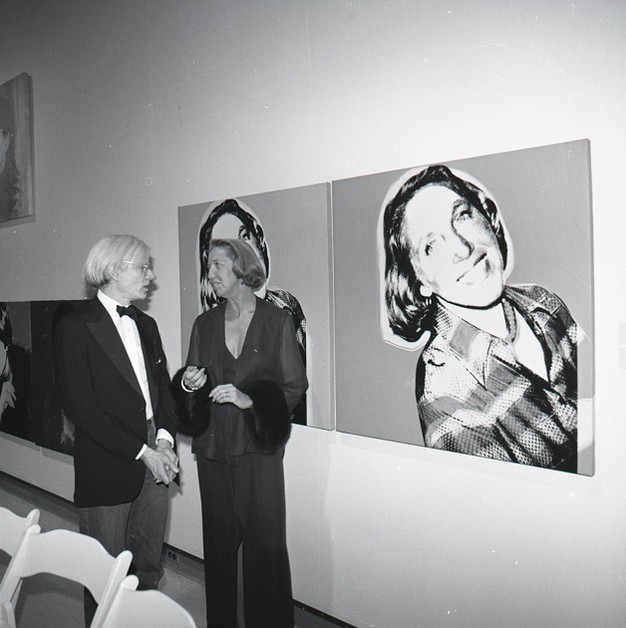
The Art Ladder in SAM

One of SAM's Galleries
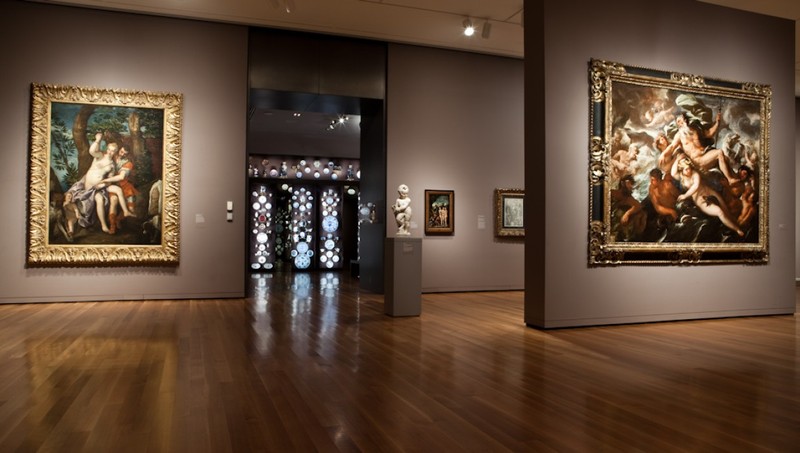
Olympic Sculpture Park
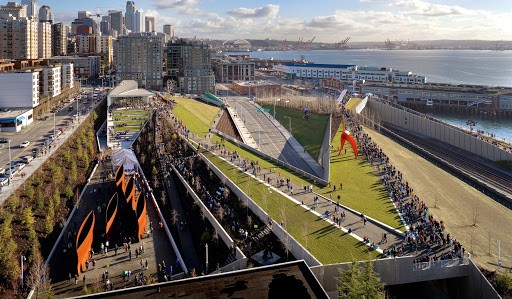
One of the Native American Galleries
.jpg)
Backstory and Context
Text-to-speech Audio
The beginnings of the Seattle Art Museum (SAM) dates back to 1908 when its parent institution, The Fine Art Society, was founded. In the late 1920s, the president of the society, Carl Gould, an architecture professor at the University of Washington, renamed it the Art Institute of Seattle. In 1931, Dr. Richard Fuller and his mother Margaret donated $250,000 to build a home for the newly named Seattle Art Museum. The city of Seattle agreed that they would fund the servicing and maintain the building if the Fullers took responsibility for the construction, collections, and operations.
Carl Gould was chosen to serve as principal architect and decided on a modern Art Deco style.The Seattle Art Museum finally opened on June 23, 1933 in Capitol Hill's Volunteer Park and welcomed 33,000 visitors on the first day. The first collection to go on display was the Fullers' Asian art holdings; the Chinese jades and ceramics caught the most attention as well as publicity. Dr. Richard Fuller remained the unpaid museum director of SAM until the 1970s, with the exception of a brief hiatus during World War II when he served in the army. The museum continued to attract visitors and in the first year alone more than 346,000 people came through the doors.
Despite the success, the country was in the midst of the Great Depression and the city of Seattle could not uphold their financial responsibility, therefore, the museum was only half the size it was intended to be. Regardless of the financial difficulties SAM faced in the 1930s, prominent Seattle natives like banker Manson Backus donated paintings by such famous artists such as Whistler and Rembrandt. Throughout the 1940s, the art collection continued to grow with works coming in from the likes of Japan and SAM welcomed their first traveling exhibition, "India: Its Achievements of the Past and of the Present. " The exhibit was housed in 12 of SAM's galleries for three months. To help the war effort, SAM screened civilian defense films and opened its doors to the American Red Cross and civilian defense instructors.
In 1951, SAM gained its most famous Japanese artwork when Mrs. Donald Frederickson donated a portion of a 17th century "Deer Scroll;" the other portion belongs to the Japanese emperor. Other notable pieces of work in the museum include: Jackson Pollock's "Seas of Change," "The Egyptian Masterworks of Tutankhamen," a large collection of Japanese textiles and African art, and Jonathan Borofsky's "Hammering Man." The 1960s saw continued expansion for SAM when they opened the Seattle Art Museum Pavilion at the Seattle Center, which housed a large modern art collection. In 1999, SAM partnered with the Trust for Public Land to raise $17 million to purchase waterfront property to build a large public park that would be free for people to come and enjoy.
Marion Weiss and Michael Manfredi of Weiss/Manfredi were the lead designers for Olympic Sculpture Park that opened in 2007 and is the city's largest green space. That same year, SAM reopened after an extensive renovation led by Allied Works Architecture. More than 30,000 people visited that first weekend SAM reopened to view the exhibits that filled the space that had nearly doubled. Today, SAM operates three different facilities, the main one in Seattle, the Seattle Asian Art Museum (SAAM) in Volunteer Park, and the Olympic Sculpture Park. SAM continues to serve as the Pacific Northwest's center for visual arts.
Sources
Seattle PI. A brief history of the Seattle Art Museum, Seattle PI. May 3rd 2007. Accessed February 11th 2020. https://www.seattlepi.com/ae/article/A-brief-history-of-the-Seattle-Art-Museum-1235822.php.
Cruise Be. Seattle Art Museum, Cruise Be. Accessed February 11th 2020. https://www.cruisebe.com/seattle-art-museum-wa.
SAM. About SAM, Seattle Art Museum. Accessed February 12th 2020. http://www.seattleartmuseum.org/about-sam.
Seattle Boat Show
SAM
SAM
SAM
Cruise Be
Sotheby's
Weiss/Manfredi
Visit Seattle
